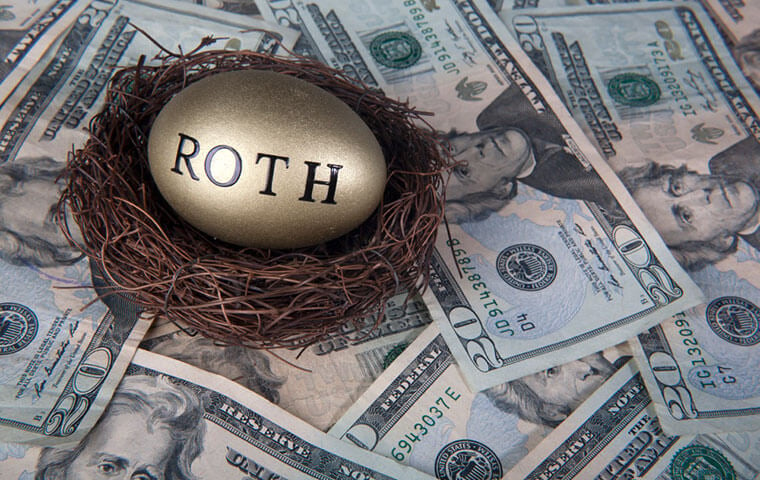
Conversions will be made through the My Account feature on www.tsp.gov either as a specific dollar amount or as a percentage of the eligible funds, with spousal consent not required. Image: Jason York/Shutterstock.com
By: FEDweek Staff
The TSP has said it will make available as of January 28 the option to convert traditional account balances to Roth status, although cautioning about the tax impact on investors who choose to do so.
While the TSP earlier had said it would make those in-plan conversions – allowed under late-2022 law – available in the new year, officials specified at the TSP’s governing board’s November meeting that the option will launch as of that date. Converting investments made on a pre-tax basis and their earnings to Roth status makes the money non-taxable on withdrawal and also makes it exempt from requirements for retirees to take minimum distributions starting at age 73.
However, “When a participant converts money from their traditional TSP balance, the taxable Roth in-plan conversion amount will become part of the participant’s taxable income for the year. This means that they’ll pay income tax on the taxable conversion amount based on their income tax rate,” says guidance to agencies. “We strongly recommend that participants speak to a tax advisor before requesting a Roth in-plan conversion.”
As announced earlier, there will be a minimum conversion amount of $500 and account holders will have to maintain at least $500—what the TSP is calling a “hold back amount”—in each “non-Roth payroll account source”—traditional investments by employees, agency automatic contributions and agency matching contributions. “If a source is below the $500 minimum balance, the source will not be eligible and will not be included in the calculation/conversion,” it says.
“Spousal beneficiaries with a balance of at least $500 are eligible to request a conversion. Spousal beneficiaries are not subject to the $500 “hold back amount,” it adds.
Conversions will be made through the My Account feature on www.tsp.gov either as a specific dollar amount or as a percentage of the eligible funds, with spousal consent not required.
Earlier proposed rules had said there would be an annual limit on such transactions but had not specified a number; the guidance says the maximum will be 26 per year. Amounts on investment through the mutual fund window feature would have to first be transferred back into one or more of the TSP’s own funds.
Of the $1.07 trillion on investment with the TSP through October, only $88 billion was in Roth status. However, the TSP said in that notice that there has been interest in ability to make such conversions since Roth balances were first introduced in 2012, with 35 percent of those responding to a survey last year saying they would be likely or extremely likely to make conversions if allowed.
The TSP also has highlighted, at the board meeting and in separate guidance, a change to “catch-up contribution” investments, which are allowed for those age 50 and older at any time in a given year, above the standard limit on investments. As recently announced, for 2026, the standard limit, called the elective deferral limit, will rise by $1,000 to $24,500; the catch-up limit will be $8,000, up by $500, except that for those age 60-63 it will be $11,250, the same as this year.
The 2022 law requires that catch-up investments must be made in Roth status for those whose earnings in the prior year exceeded a limit. For 2026 purposes, that limit will be $150,000 in 2025 earnings. (The provision initially was to take effect in 2024, but in 2023 the IRS delayed implementation.)
“Once a participant over the wage threshold reaches the IRS pre-tax maximum in traditional contributions, any additional contributions will automatically switch to Roth and go into their Roth TSP balance to satisfy the IRS requirement,” the TSP said in the notice.
OPM Gathering Input on Impact of Cutting Telework, DEI Initiatives
Pay Raise Deferred to Trump in Key Senate Bill; House Version Differs on Workplace Issues
OPM Seeks to Assure Managers on Liability Risk in Taking Disciplinary Actions
Missed TSP Investments to Be Made Up, but No Earnings Credited
House Forces Vote to Override Trump Order on Unions
See also,
Eight Key Topics to Cover Before Your Federal Retirement
What Retirement Date Maximizes My Federal Benefits?
Health Savings Account for 2026? Why I Love My HSA
Does My FEHB/PSHB Plan Stack Up? Here’s How to Tell
OPM Details Coverage Changes, Plan Dropouts for FEHB/PSHB in 2026
The Best Ages for Federal Employees to Retire
FERS Retirement Guide 2025 – Your Roadmap to Maximizing Federal Retirement Benefits
